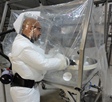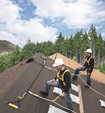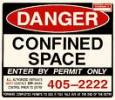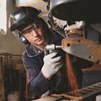
By Pat Furr
It is still a very dangerous business, and even with our best efforts, confined space accidents are still occurring.

By Alan E. George
Several advances are in operational use. They improve the safety of operations and improve user comfort for increased productivity.

By Craig Firl
Before Dec. 15, conduct an on-site compliance check. Confirm that workers elevated 6 feet or more above the lower level of a structure have OSHA-acceptable forms of fall protection.

By
Remember: The safest entry is no entry at all!
By Isaac Eliaz
Our best bet is to layer multiple preventive strategies. If one is less than effective, others can fill the breach.
By Robert Kravitz
Organizations need to know exactly when, where, why, and how items are being purchased -- and this is where distributors can play a defining role.
By Laura Proctor
Their needs vary by age and also by personal preferences.

By Katie Twist-Rowlinson
Head and face PPE should be rated to meet the rigors of the specific job application, including hazard type, amount of protective coverage required, electrical conductivity, heat rating, and ease of use when worn in combination with other PPE.

By Mike Sawchuk
While cutting costs in training programs may provide temporary financial relief, there is considerable evidence it can be a very serious mistake.
By David Shutt
A challenging factor is potential risk from several different chemicals, each of which requires a different glove material for maximum protection.
By John Jerin
Many EMS professionals complete skill refreshers every 90 days to keep their skills current. A hands-on skill session every 90 days is ideal for workplace lay responders.
By Jerry Laws
To enter, just send me a description of work you're doing now or have recently done in a cold environment –- and your shoe size.
By Robert Pater
Cycle through the 12 Steps for Effective Leadership, each time with greater nuance, on a higher level.